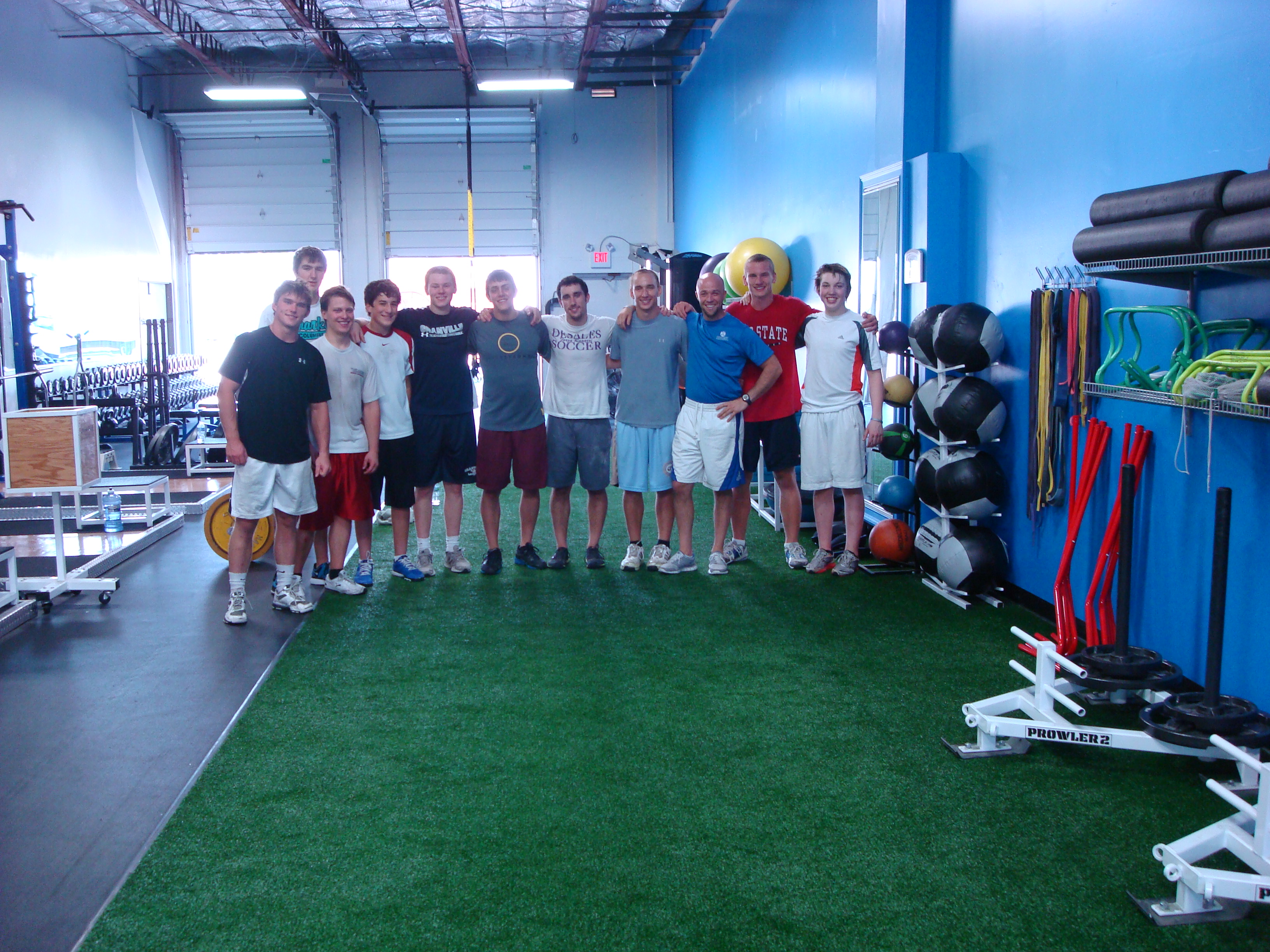Anthony Donskov
Anthony Donskov is the founder of DSC where he serves as the Director of Sport Performance. Donskov holds a Masters Degree in Exercise Science & is the author of Physical Preparation for Ice Hockey.
Personal Training vs. Strength and Conditioning
- Font size: Larger Smaller
- Hits: 13675
- Subscribe to this entry
- Bookmark
It never ceases to amaze me how quickly people confuse strength and conditioning with personal training. Take a look at the chat on web site forums, so-called fitness experts and armchair trainers and you may think that personal training and strength and conditioning are the same. Conversations such as:
“Have you tried that new single leg exercise with your eyes closed? All you need is one BOSU ball, three resistance bands and two kettlebells. It’s excellent for proprioception and kinesthetic awareness.”
OR
“I can’t believe some coaches don’t back squat their athletes. Wow, what poor coaching! Failure to add back squats simply means he/she can’t coach them.“
Personal training and strength and conditioning are NOT the same! There may be some overlapping qualities, but the bare bones programming is a completely different beast. Below are four major differences between personal training and strength and conditioning. First lets define these art forms.
- Personal Training: A one on one coached exercise program. I will add that semi-private training (groups of 5) is drastically different than strength and conditioning.
- Strength and Conditioning: Training large groups (9 or more), or sports teams (sometimes multiple sports teams at once).
Personal Training vs. Strength and Conditioning
1.) Resources: When dealing with large groups resources need to be carefully accounted for. If you only have 9 foam rollers and your training a team of 18 hockey players you may have a resource problem. It is paramount that your exercise selection be based on the resources you have available. Yep, that means that your single leg, eyes closed, BOSU ball, three resistance band, kettlebell exercise won’t make the cut training large groups. You can’t add exercises if you don’t have the resources!
2.) Exercise Selection: Is the exercise safe? Can it be taught in large groups? What’s the learning curve of the exercise? Can my least skilled athlete master the exercise safely? Is there a logical progression? Some exercises (Back Squat, deadlift ect.) need hyper-coaching! When was the last time you walked into a weight room and witnessed 18 high school athletes back squatting with appropriate weight and technical proficiency? Please don’t argue hip angle, force velocity output and biomechanics with me. If you’ve ever trained 18 high school athletes at once, you will know that this is very, very different than personal training.
3.) Flow: How will your athletes move around the facility without clutter, congestion and chaos? We set up Donskov Strength and Conditioning to flow in a clockwise direction. This is a system! Athletes start on the turf, then off to the Olympic platforms, then strength area, finally conclude in the energy system area. Program design is based off this flow. Without planning flow, your gym may look like a giant garage sale. There is a BIG difference between planned busyness and un-planned chaos. This may not be an issue when personal training, but in strength and conditioning when flow fails, the workout fails. It’s like buying deck seats on a sinking ship!

4.) Coaching: The best coaches are hands-on coaches who are masterful at simple, easy to understand cues! Can you place your athletes in the correct anatomical position and speak with clarity and simplicity all in less than 30 seconds? This is an art that needs to be mastered. One of the biggest programming differences in training large groups vs. personal training is time. Time is a constant, but dealing with 18 athletes vs. 1 client seems to make time move faster than normal. Coaching needs to be simple and exercise selection should be self-impaired (easy to set up). Hyper-coaching is not an option when dealing with large groups.
Personal training and strength and conditioning are both art forms, but very different when looked at in finer detail. Resources, exercise selection, flow and coaching technique are all areas where the two differ immensely. It doesn’t mean that your single leg, eyes closed, BOSU ball, three resistance band, kettlebell exercise is bad (which it is…sorry!), but it does mean that it could not be performed in large groups. Many times it’s not the fault of the exercise, but the application. Personal training and strength and conditioning are not the same!
Anthony Donskov, MS, CSCS, PES, is a former collegiate and professional hockey player, founder of Donskov Strength and Conditioning Inc., (www.donskovsc.com) and Head Instructor/Director of Off-Ice Strength and Conditioning for Donskov Hockey Development (www.donskovhockey.com). He can be reached at info@donskovsc.com .
Facebook: http://www.facebook.com/pages/Donskov-Strength-and-Conditioning-Inc/111694352189187
Twitter: http://twitter.com/Donskovsc
